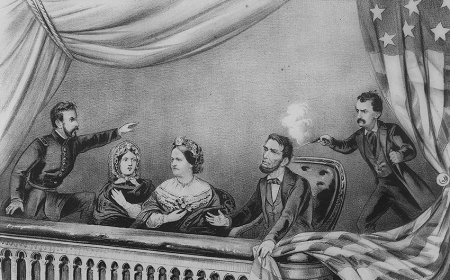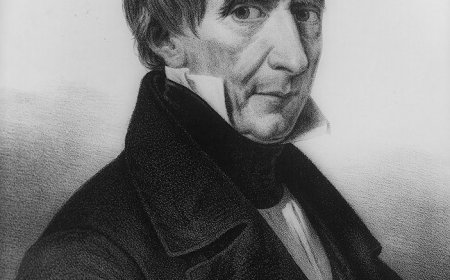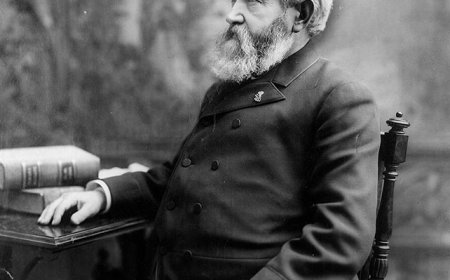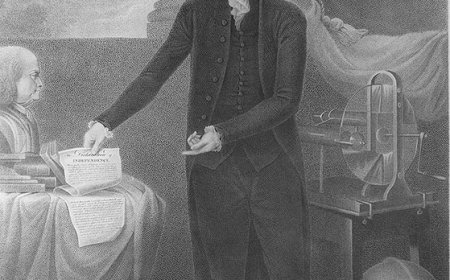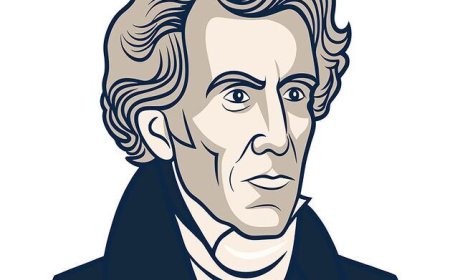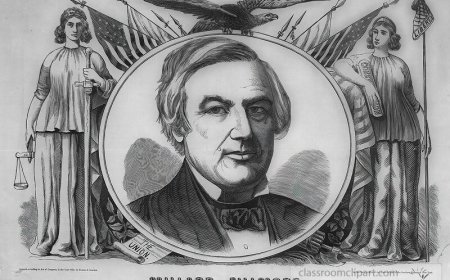James Monroe Biography for Students | Monroe Doctrine, Presidency & Legacy
Explore the life of James Monroe, the 5th President of the United States and author of the Monroe Doctrine. Learn about his early life, presidency, leadership after the War of 1812, and lasting impact—plus vocabulary words, fun facts, a quiz, and a kid-friendly summary!
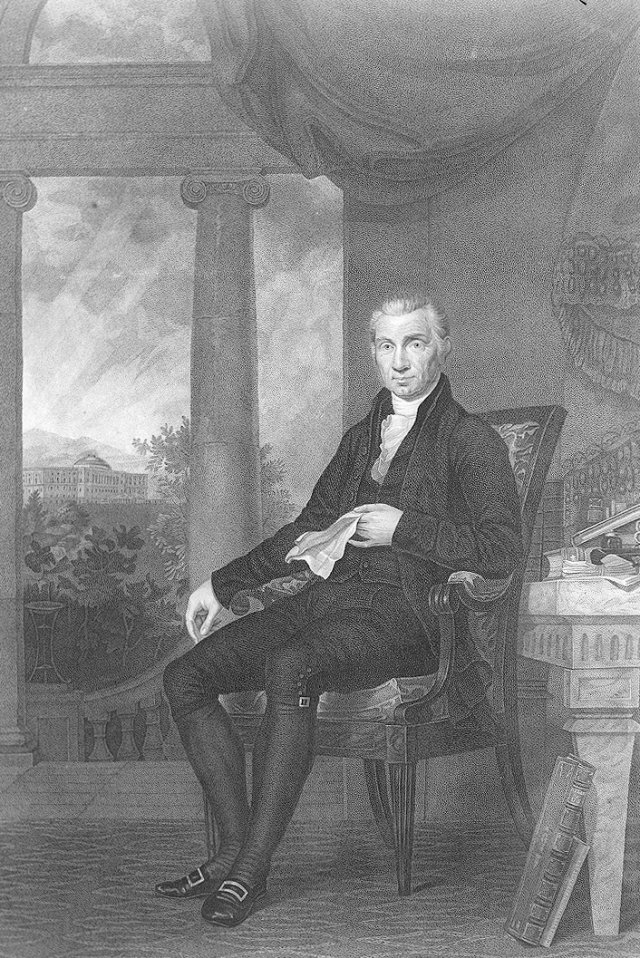
🧭 Introduction
James Monroe was the 5th President of the United States, serving from 1817 to 1825. He is best known for the Monroe Doctrine, a major policy that shaped American foreign relations for over a century. Monroe led the country during a time known as the Era of Good Feelings, a period of national unity and peace after the War of 1812. He helped the young United States grow in both size and strength and remains one of the most respected early presidents.
👶 Early Life and Education
James Monroe was born on April 28, 1758, in Westmoreland County, Virginia. He grew up in a farming family and was the oldest of five children. His father was a carpenter and farmer, and the family valued hard work and education.
Monroe attended the College of William & Mary but left in 1776 to join the fight in the American Revolutionary War. He was just 18 years old when he joined General George Washington’s army. Monroe was wounded in the Battle of Trenton and continued to serve with honor throughout the war.
After the war, Monroe studied law under Thomas Jefferson, who became his mentor and friend.
🏛 Political Career Before Presidency
Before becoming president, Monroe had a long and impressive political career. He served in many important roles:
-
U.S. Senator from Virginia
-
Governor of Virginia
-
Minister (ambassador) to France and Britain
-
Secretary of State and Secretary of War under President James Madison
During these years, Monroe helped negotiate the Louisiana Purchase and gained valuable experience in diplomacy and leadership.
Monroe was a member of the Democratic-Republican Party and supported a strong but limited federal government.
🇺🇸 Presidency Overview
James Monroe was elected president in 1816 and re-elected in 1820 with almost no opposition—he won all but one electoral vote! His presidency came after the War of 1812, and the nation was ready for peace and progress.
His time in office is often called the Era of Good Feelings because:
-
Political tensions between parties were low
-
The economy was growing
-
People felt more united as Americans
Some major events during his presidency included:
-
The Missouri Compromise (1820), which tried to keep peace between free and slave states
-
The signing of the Adams-Onís Treaty (1819), which gave Florida to the U.S. from Spain
-
The issuing of the Monroe Doctrine (1823), warning European nations not to interfere in the Americas
⚖️ Domestic Policies and Programs
Monroe worked to strengthen the country from within. He supported:
-
Building roads and canals to connect different parts of the U.S.
-
Protecting American industries with tariffs
-
Balancing free and slave states to avoid conflict between the North and South
The Missouri Compromise was a key part of this effort. It allowed Missouri to enter as a slave state and Maine as a free state, keeping the balance between North and South.
Monroe believed that growth and unity were the keys to a strong nation.
🌍 Foreign Policy and Global Relations
James Monroe’s most famous achievement was the Monroe Doctrine. Announced in 1823, it stated:
-
The U.S. would not interfere in European affairs
-
Europe should not interfere in the Western Hemisphere
-
Any attempt by a European power to control a country in the Americas would be seen as a threat to the U.S.
This policy told the world that America was strong and would protect its neighbors in the Americas. It became a major part of U.S. foreign policy for many years.
Monroe also helped settle border disputes and improve relations with other countries in the Western Hemisphere.
🧾 Legacy and Historical Impact
James Monroe’s legacy includes keeping the country peaceful, helping it grow, and making America more confident in the world. His presidency is remembered for:
-
National unity during the Era of Good Feelings
-
The Monroe Doctrine, which shaped foreign policy
-
Territorial expansion and statehood for new areas
He is often ranked as one of the better U.S. presidents because of his calm leadership and ability to bring people together.
👨👩👧 Personal Life and Family
James Monroe married Elizabeth Kortright in 1786, and they had two daughters. Elizabeth was elegant and often hosted social events, but she was also quiet and private.
Monroe loved farming and returned to his estate in Virginia, called Highland, after retiring from politics. He stayed active in public affairs but lived a quieter life in his later years.
Monroe died on July 4, 1831, making him the third president to die on Independence Day, after Thomas Jefferson and John Adams.
💬 Famous Quotes
“National honor is national property.”
Monroe believed that the reputation and respect of a country must be protected.
“The best form of government is that which is most likely to prevent the greatest sum of evil.”
This quote shows Monroe’s belief in wise and fair government to protect citizens.
💡 Interesting Facts About James Monroe
-
He was the last president who was a Founding Father.
-
Monroe was injured in the Battle of Trenton during the Revolutionary War.
-
He studied law under Thomas Jefferson.
-
He wore Revolutionary War–style clothing long after it went out of fashion.
-
He was the third president to die on July 4.
📚 Vocabulary Words
| Word | Definition |
|---|---|
| Doctrine | A policy or set of beliefs held by a government or leader |
| Compromise | A way of settling differences by each side giving something up |
| Tariff | A tax on goods brought into a country |
| Ambassador | A person sent to represent the country in another country |
| Expansion | The act of growing or making something larger |
✅ Interactive Quiz
Q1: What number president was James Monroe?
A. 4th
B. 5th
C. 6th
D. 7th
Q2: What major foreign policy did Monroe create?
A. Bill of Rights
B. Monroe Doctrine
C. Embargo Act
D. Missouri Plan
Q3: What was the Era of Good Feelings?
A. A war
B. A time of peace and national unity
C. A trade agreement
D. A political party
Q4: What country did the U.S. gain Florida from?
A. France
B. Mexico
C. Spain
D. Britain
Q5: What major compromise was made during Monroe’s presidency?
A. Three-Fifths Compromise
B. Great Compromise
C. Missouri Compromise
D. New Deal


















































